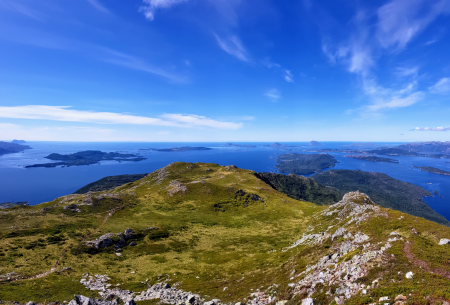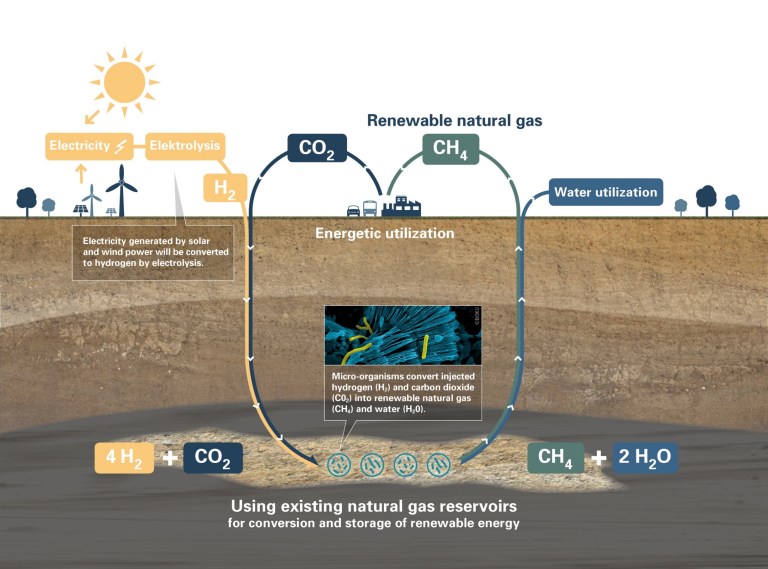Tuesday 11 June – 16:30 to 17:30 CEST
Where: EAGE Community Hub
A very special session awaits you at the EAGE Annual this year. With the conference visiting the Norwegian capital, our Local Chapters Oslo and Local Chapter Stavanger will have the pleasure of introducing you to some of the hidden gems of the country’s fascinating historical and geological landscape, followed by some excellent networking time.

Known for its breathtaking natural beauty, Norway is a country adorned with rugged mountains, deep fjord carved by ancient glaciers and pristine landscapes. Nestled in the northern reaches of Europe, Norway’s geological diversity is a testament to its turbulent geological history.
If you have never been to Norway, or if you are curious to discover more, you are welcome to join – and if you have any spare time during your stay, you may even want to add some of the geosecrets to your itinerary! Local Chapter Oslo and Stavanger gathered a team of local experts to guide you through interesting facts and what makes them passionate about geoscience in Norway.
After the session, you are welcome to stay a little longer and get to know our local communities!
All delegates are welcome to attend this session at the EAGE Community Hub.
Programme
What secrets lie beneath the waves off Norway’s coast, where the earth split apart millions of years ago? What very rare mineral treasures lie beneath Norway’s rugged landscape? Why is Norway a prime location for understanding the Earth’s climate past and future?
“Geosecrets of Norway” will lead you to find the answers. Victor Aarre Madsen, treasurer of Local Chapter Stavanger, will open the session by challenging you with curiosities and fascinating facts from Norway.
Zoom in on this photo!
Can you guess some of the geosecrets already?


Victor Aarre Madsen
Victor has worked for nearly 30 years in various Research & Engineering positions at SLB, mainly within the seismic discipline. He is well known for his contributions to the Petrel E&P software platform and he holds 14 granted US patents for some of the science inside it. In the early days, Victor focused on shear-wave anisotropic velocity model building and imaging, before he moved on to reservoir characterization and time-lapse seismic monitoring. Seismic attributes are a speciality. In 2023 Victor left SLB and now works as a consultant.
The Oslo Region – World class field laboratory for geological understanding
The Oslo Region, aka the Oslo Rift, is a geological structure extending approximately 115 km north and south of Oslo. Having attracted earth scientists for at least 200 years, with its geological development documented in hundreds of publications, this area truly is a shrine for geological education at all levels.
The region is fault controlled, bordered by Precambrian rocks to the east and west, and by Caledonian nappes to the north. The Lower Palaeozoic succession is approximately 2500 m thick and consists of fossiliferous limestones, shales and sandstones. These rocks were folded, faulted and thrusted during the Caledonian orogeny, and rifted during the Late Palaeozoic. Local and regional thermal metamorphism is evident due to the Late Palaeozoic magmatic activity.

Hans Arne Nakrem
Hans Arne Nakrem, a paleontology professor at the University of Oslo’s Natural History Museum, specializes in late Paleozoic-Mesozoic paleontology and Svalbard geology. His current research focuses on conodonts and bryozoans for biostratigraphy and paleoecology, along with contributing to a project on Mesozoic marine vertebrates and Svalbard’s geological evolution. He also studies the Lower Paleozoic Oslo Region, emphasizing biostratigraphy and paleoecology. Nakrem actively engages with collections, teaches, supervises students, and conducts outreach through geological excursions and popular lectures.
Monolitten: A Neoproterozoic Granite from Halden
Sverre Planke, CEO of Volcanic Basin Energy Research and Prof. II at the University of Oslo

Sverre Planke
Sverre Planke is a geoscientist with research focus on the processes and structure of volcanic rifted margins and volcanic basins based on integrated geological, geophysical, and theoretical methods. Sverre is a co-founder of VBER (1999) and P-Cable 3D Seismic (2007). He holds a B.Sc. in geological engineering (1985) and a M.Sc. in geophysics (1987), both from the University of Utah, and a Ph.D. in geology (1993) from the University of Oslo.
The Salt Deposit of Hallstatt: From the Celts Until Today
Mario Habermüller (NiMBUC Geoscience)
Hidden in the mountains of the Northern Calcareous Alps, the small village Hallstatt has become one of the most visited spots in Austria. Besides its beautiful scenery it is also known for hosting the oldest salt mine of the world, which has earned Hallstatt the status of a UNESCO world heritage site.
Salt mining dates back to at least 1.500 BC and is still active today. The salt body belongs to the so-called ‘Haselgebirge’ Formation which was deposited at the late Permian on the continental shelf of the Pangea supercontinent (< 251 Ma), before its mobilization during the Alpine orogeny.
Recent investigations have demonstrated that the Hallstatt salt deposit represents a strongly tectonized diapir and that evaporite deposition and withdrawal has affected sedimentation of the overburden strata. The presentation will give a brief overview and show some lesser-known facts on the geology of Hallstatt.

If it’s Methane That You Need, You Want to Hear About C-CED
Markus Pichler (RAG Austria AG)
Microbial activity in the subsurface has gotten a lot of attention recently as it is seen as one of the major barriers for large scale hydrogen storage.
RAG Austria AG has done extensive research on the topic of subsurface hydrogen storage and has built the first of its kind subsurface hydrogen storage facility in a porous reservoir. There microbes have been found that do convert hydrogen and carbon dioxide to methane.
Instead of preventing this process RAG is encouraging it by injecting both hydrogen and carbon dioxide to generate renewable Geo-Methane. This speech will give a short introduction to the project and shed some light on what the findings of the research project “Carbon Cycle Economy” are.

Forgotten Thermal and Sub Thermal Springs – A Hidden Link to Future Geothermal Energy Use in Vienna?
Gregor Goetzl (EVN Waerme GmbH), Stephan Hoyer (GeoSphere Austria), Godfrid Wessely (formerly OMV), and Martin Maslo
In current times, the use of natural thermal water, located inside permeable rocks of the Vienna Basin, received increasing attention by various stakeholders for energy supply reasons. However, natural discharge and springs related to the so called “hydrodynamic system of the southwestern Vienna Basin” was used in several historic balneological sites inside and around the city of Vienna.
Although these spas were either abandoned or transferred to modern swimming pools, such as the “Amalien Bad”, the associated legacy of former thermal water use might help to better understand the nature of thermal aquifer systems below Vienna for future energetic purposes.
This short presentation exhibits the almost forgotten thermal baths of ancient Vienna and connects tradition to future prospects from a geological point of view.





